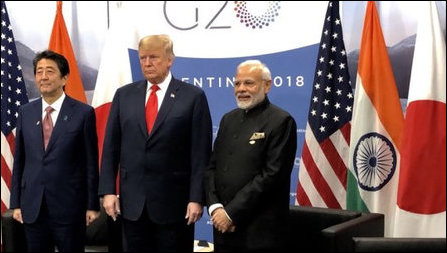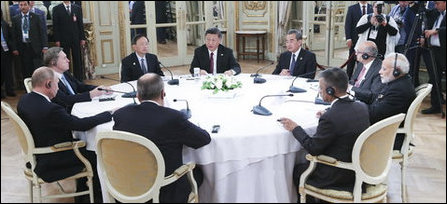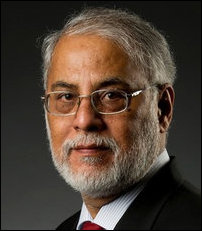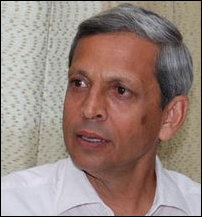There were two separate trilateral meetings of powers involving India on the sidelines of the G20 summit in Argentina. One trilateral was between China, Russia and India and the other one was involving the USA, Japan and India. Both took place on Friday the 30th November.
Chinese President Xi Jinping, Indian PM Narendra Modi and Russian President Vladimir Putin had an “informal” trilateral meeting.
Xi called on the three countries to strengthen multilateral mechanisms “including the Group of 20, BRICS and Shanghai Cooperation Organization,” according to a news release from the Chinese foreign ministry. He was talking about establishing “partnerships instead of alliances”.
However, the formal trilateral summit between US President Donald Trump, Indian PM and Japanese Prime Minister Shinzo Abe had been arranged well in advance.
The Times of India reported on Tuesday that India had proposed that the JAI states synergise their infrastructure and related projects in the IOR countries.
“This is something India and Japan have begun working on, particularly in Bangladesh, Myanmar and Sri Lanka,” the news report said adding that the recent BUILD Act of the USA would also be bringing synergies from the private sector into what the two Asian actors had started to work on in the three IOR countries.
The five aspects of the JAI agenda are freedom of navigation, maritime security, connectivity, sustainable development and disaster relief.
The five points are in fact cornerstones of the US version of “Free and Open Indo-Pacific” (FOIP).
US President Donald Trump announced last year the collective name for the policy as FOIP, which has been further elaborated by US Vice President Mike Pence and State Secretary Mike Pompeo.
Admiral Philip S. Davidson, the USINDOPACOM Commander, was addressing “China Power” conference at the Centre for Strategic & International Studies (CSIS) Headquarters at Washington, DC., also on Friday the 30th November.
“We are talking about the security and the right of all nations to trade, to communicate, to send their financial information and communications through cables under the sea,” Admiral Davidson said on connectivity and security.
“Free” means nations do not have to choose who they trade with and who they partner with because of fear or coercion, he said.
An “Open” Indo-Pacific includes open investment environments, transparent agreements between nations, protection of intellectual property rights, fair and reciprocal trade, Admiral Davidson explained.
He was also talking about ASEAN centrality and the role of the private sector through the BUILD Act.
Manoj Joshi from the New Delhi based think-tank, Observer Research Foundation, describes the JAI as just one of “several such networks that join the US with its allies and friends in the region.”
He describes India's current posture as being aimed at “maximising its position as a swing state”.
“[A] swing state like India may have issues with these great powers, but it also has several points of cooperation. Yet the way it swings, be it on trade, non-proliferation, human rights, finance or maritime security issues, affects the international order,” Joshi writes in an article which was featured in The Quint on Tuesday.
“In the old days it was called non-alignment, nowadays there are other words for it: multi-alignment and strategic autonomy,” he writes further.
Joshi also notes that India and Japan are working on developing joint ventures in Bangladesh, ‘Sri Lanka’ and Myanmar.
Ajai Shukla, a retired Colonel of the Indian Army, who is now a consulting editor with the Business Standard, in an article titled ‘Navy Day Special’ on Tuesday writes that the Indian navy was operating astride the IOR like a mini-superpower.
“Today, the Navy's capabilities are key to why the United States is so keen on partnering India in the Indo-Pacific,” Shukla observes.
“While India’s army and air force are clearly outgunned by China’s, especially given the likelihood of Pakistan’s support in a war, the navy is the only domain where India enjoys local superiority,” he further writes.





